Path To A One-World Bible
Increasingly, Christians are buying new Bibles and discovering a surprise tucked inside... publishers are including the Apocrypha in them!
But wait!
- When a family member dies, will you pay to get him out of Purgatory?
- Will you pay alms to get rid of your sins and deliver you from hell?
- Will you pray to angels, when needing guidance or help?
Your new Bible may tell you to.
You will discover that these new additions give you a Bible with so many contradictions, you don’t know what to believe! Will you go ask your pastor or priest to make sense of it all?
This is no joke. The Devil wants to take away simple faith in God’s holy words. He wants to replace your Bible with his own —a Christ-lowering, faith-destroying, contradictory book that will make you so confused, that you will turn to the church to tell you what to believe.
And then they’ll have you. You will be forced to trust Mother Church to interpret everything for you.
The One-World Church is coming for you.
The people who are determined to create a global religion realize that before they can do it, they have to have a one-world Bible compatible with the one-world religion.
They also must get the largest organized religious organization in the world to join it, or they’ll never have a world religion. And so they’ve got to make sure that their Bible for one-world religion includes doctrines that are very important to that organization —the Roman Catholic “church.” That means that salvation by works, purgatory, prayer to saints and angels, and other things like that, must be supported by their Bible.
The problem, of course, is that the Bibles that most real Christians use don’t have the Apocrypha. So, the Apocrypha has to be worked into it. The way that they’ve chosen to do that is to come up with a Greek translation of the Old Testament that has the Apocrypha stuck into it and claim that Jesus used it. It’s called the Septuagint.
The purpose of this book is to show you where the Septuagint came from and that there is no evidence at all that Jesus and the disciples read the Septuagint. It’s fakery. Therefore the Apocrypha is not scripture.
The Old Testament in the Christian Bible is based on the ancient Hebrew scriptures. But the Jews rejected the Apocrypha. They said, “They’re not scripture. That’s not part of the testament God gave us.”
For centuries Christians have also rejected the Apocrypha. They’ve always said, “The Old Testament is the Jewish scriptures. And therefore they will contain only that which the Jews accept as the scripture.” That’s why they rejected the Apocrypha.
But to have a world religion, you’ve got to have a world Bible. And to have a world Bible, you’ve got to have the Apocrypha.
To do this, they needed a fake letter to justify their corrupt Bible. They used this approach another time: the Donations of Constantine. It was used to convince rulers that large tracts of land belonged to the Roman Catholic church because they were donated by former rulers. Of course, the former rulers were dead and could not dispute the forged Catholic documents. It was a highly effective strategy.
Modern biblical scholars have turned interest back to this fake Greek document called a Septuagint. They said, “Jesus and the disciples read it. Therefore, they are scripture and you ought to read it, too.”
Is that true? Let’s find out.
Examining the Witnesses of a BC Septuagint
I’ve wondered for years if there was anything else available to testify to this BC Septuagint. I, and probably you, have assumed so much, for so long. It’s like when you go into any class, from elementary school to college. The teacher says, “When did the dinosaurs roam the earth?”

And they’ll say, “Millions of years ago.” It’s rote memory. It doesn’t mean it’s true. Everybody just assumes it is.
It was the same in Bible college. The teacher could ask, “When was the Septuagint written?” And we’d say, “285 BC.” My wife, Deborah, remembers it. You probably do too, if you went to Bible college or had one of those scholarly Sunday school teachers. Again, we assumed it was true. That doesn’t mean it was. Nobody actually checked it.
So let’s do that now. But we can save the discussion of the actual Letter of Aristeas for afterward.
Let’s talk about the other supposed testimonies for a BC Septuagint. The best list comes from Thackeray’s Appendix, entitled “The Evidence of Some Ancient Jewish and Christian Writers on the Origin of the Septuagint Version.” First are the rabbinic Jewish writings.
Rabbinic Jewish Writings

Thackeray’s first witness is the Megillath Taanith, The “Roll of Fasting,” written between 41-70 AD, three centuries after the supposed Septuagint, during the revolution of the Zealots.25
It says “On the eighth (or 7th) day of Tebeth (December - January) the Law was written in Greek” (this could simply mean that they wrote out the Hebrew words with Greek letters, not Hebrew letters) “in the days of King Tolmai (Ptolemy), and ‘the darkness’ (like in Exodus 10:21) came upon the world for three days.”26 That’s an interesting quote, but it doesn’t tell much.
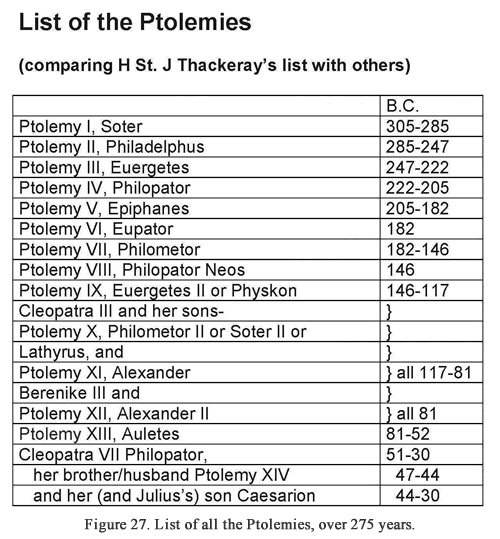
First, which ruler named Ptolemy? Starting with Alexander the Great’s General Ptolemy, there were no less than 15 Ptolemies, 14 of which (plus 7 queens) ruled over Egypt between 305 and 30 BC.
Second, was it started, finished, or all done on the 8th of Tebeth? It doesn’t say.
Third, was it translated from Hebrew to Greek, or was it just Hebrew words written in Greek letters —transliterated?
Fourth, where did the story of darkness upon the world for three days come from? We have no such story anywhere else in the world. It would be rather obvious, if it happened. Somebody would have recorded it.
So I don’t trust this story, at all. It sounds like a folktale, not solid evidence. Witness number one is excused.

Thackeray’s second witness is the Masseketh Sopherim, the “Tractate of the Scribes.” It is a document written in the 700s AD, almost 1,000 years after the supposed Septuagint. Here are excerpts of Part 1, Section 8: “It happened once that five elders wrote the Law in Greek” (which could mean Hebrew words written in Greek characters) for one of those 15 Ptolemies; “and that day was a hard day for Israel, like the day on which Israel made the golden calf....” That means they claimed that they “wrote the Law in Greek,” and that it was a bad thing.
Then it basically says that, on another occasion, whichever Ptolemy this allegedly was, put 70 Hebrew elders in 70 cells (private rooms) without telling them why. Then he said, “Write me out the Law of Moses your master.” Then all of them were “of one mind” and wrote out the Law, evidently without their own copy of the Hebrew Law, “but they altered 13 passages.” Then it lists the passages in detail: 7 in Genesis, 3 in Exodus, 1 in Numbers, and 3 in Deuteronomy... which is weird, because that adds up to 14, not 13.
Going on, Masseketh Sopherim also says that the Hebrew names for God in that scroll were all written in gold letters. But it says the wise men replied, “Put it away.”
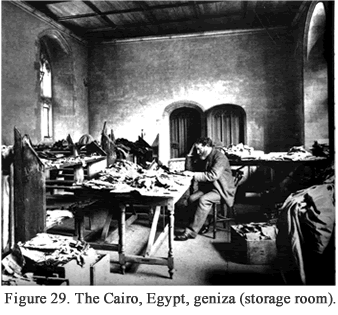
They commanded that the scroll be stuck into a geniza, a storage room, because the gold letters made it unfit to use in a synagogue.
So now we have a different story. We still don’t know which Ptolemy supposedly ordered the Law to be written. And it says only 70 elders, not 72, like in Aristeas, as you will see. And it claims they all wrote the same exact words in their private cells, even in the 13 verses (or 14) where they disagreed with the Hebrew... without even one Hebrew text in their possession. Remember, according to this account, the king didn’t say why he was putting them in separate cells, so they had no way to prepare for this.
Masseketh Sopherim also says that just the names of God were written in gold, but, guess what? The Letter of Aristeas, Section 176 says the whole scroll was written in gold!27 So that testimony doesn’t match, either.
I don’t trust this account. Neither did the Jewish scholars, it turns out. In modern, printed copies of the Babylonian Talmud, the Masseketh Sopherim is stuck in another section, as an Addendum at the end of the book, apart from the accepted ancient Talmudic writings. They knew it blended in 8th century AD traditions. So they sidelined it in a separate place.
Witness number two is excused.
Thackeray’s third witness is the Jerusalem or Palestinian Talmud, 350-400 AD, over 600 years after the supposed Septuagint was made.

This account is found in Megilla I. 71 d (at the bottom). The Jerusalem Talmud account says pretty much the same as the Masseketh Sopherim.28 So you can’t trust this story, either. It has the same problems I just listed. Witness number three is excused.
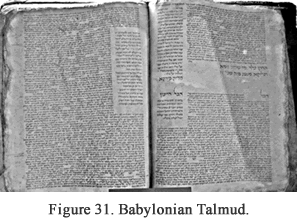
Thackeray’s fourth witness is the Babylonian Talmud, Talmud Bavli, from around 499 AD, almost 800 years after the supposed Septuagint was made.
This account is found in Megilla 9a. It matches the story of the Masseketh Sopherim, but changed “seventy” elders to “seventy-two,” agreeing with the Letter of Aristeas. And it adds the declaration that it was not permitted to translate the Hebrew into any other language than Greek. And it had some other differences.29 So it corrected one part of the “Septuagint story,” but the rest of the sections have the same errors. Witness number four is excused.
That’s all the witnesses from Rabbinic Judaism, listed in Thackeray’s Appendix. None of them passes the test. Now for the Hellenistic Greek Jewish writings.
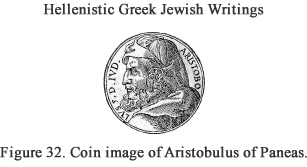

Thackeray’s fifth witness is the letter of Aristobulus of Paneas. It was supposedly written around 186-145 BC, 100 years after the supposed Septuagint, because it is addressed to King Ptolemy VII Philometor during his reign. However, so many scholars have disputed this letter that they actually call it Pseudo (fake) Aristobulus.
The only one who claimed the letter even existed was Eusebius of Caesarea in the 300s AD in his Preparation for the Gospel. It took me a while to track this one down. I verified the wording in a 1903 translation by E.H. Gifford.30
The letter of Pseudo-Aristobulus claims that Plato, who lived in the 300s BC, was a follower of the Laws of Moses and “studied all their details.” “But,” he said, “the complete translation of the Law and all its contents was made under king Ptolemy Philadelphus ... who displayed the greatest zeal, while Demetrius of Phalerum busied himself with the necessary arrangements.”31
Anybody who reads Plato knows full well that Plato did not follow the Laws of Moses.
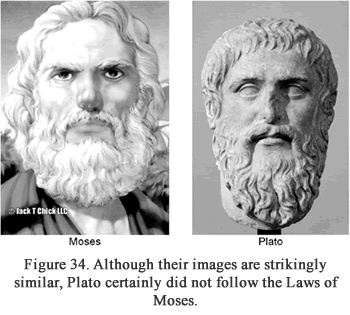
That’s just bogus. And the fact that so many scholars don’t believe for a minute that this document is real, pretty much settles it. Besides, again, we only find this letter in Eusebius of Caesarea’s writings in the 300s AD, and Eusebius had a personal, vested interest in promoting Origen, plus the Septuagint with the Apocrypha, that Eusebius copied from Origen’s 5th column of the Hexapla, in the city of Caesarea Maritima, where the Hexapla was located. And this same Eusebius also became lapdog to Emperor Constantine, who pushed Origen and his corrupted Greek Bible.
Witness number five is excused.
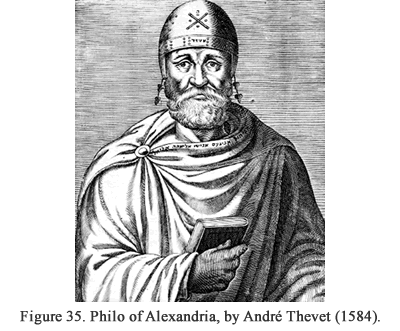
Thackeray’s sixth witness is Philo of Alexandria, 25 BC-50 AD. He was a Hellenistic Jew who lived in Alexandria, Egypt. He was born into wealth and society, educated in Greek and Roman and Egyptian, as well as Jewish, culture. He believed that the scriptures cannot be understood literally. He started up the “allegorical” (non-literal) method of understanding the Bible that Origen later copied. Philo said God was too marvelous and complex to take Him literally. So, of course, Philo could not take God’s words of scripture, literally, either.
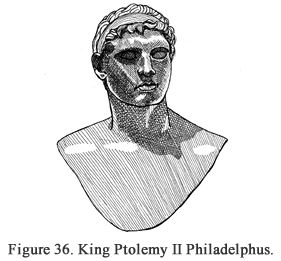
Philo’s story of the Septuagint, found in On the Life of Moses, Part 2, Sections 5-7, is the most complex one yet. Here are some highlights: First, he waxed eloquent, saying that King Ptolemy II Philadelphus (who reigned from 285- 247 BC) was the greatest of all the Ptolemies. Philadelphus had such a “passionate desire” for the Laws of Moses that he sent ambassadors to the high priest and king of Judea, who was the same guy. So the high priest/king found Hebrews trained in Hellenic Greek learning, as well as Hebrew.32 Then Philadelphus made feasts and asked them philosophical questions.33 They passed all these tests with flying colors. So Philadelphus found the purest and cleanest undiseased location in the land, the island of Pharos, for them to live and commune with God while they translated.
Here’s how Philo described the translation:
“In secret they sat, with none present save the elements of nature, earth, water, air, heaven, whose origin it was their first task to expound (for the cosmogony [origin of the universe] holds the first place in our laws [meaning Genesis 1-2]); and, as men possessed, they produced not divers interpretations, but all alike used the same words and phrases, as though some invisible prompter whispered in the ears of each.”
Then he said that they exactly defined every Hebrew word with its corresponding Greek term. And when people read both the Hebrew and the Greek, “they call those men not translators but priests of the mysteries and prophets, to whom it was vouchsafed with sincerity of mind to enter into the spotlessly pure spirit of Moses.”34

Then Philo claimed there was a yearly festival on Pharos Island to thank God for the Greek translation. So what do we make of this testimony?
First of all, Philo was not a Bible believer.
Second, he claimed that the Jewish high priest was also the king. Based on the dates, that would mean either the high priest Onias I, who was high priest until 280 BC, or his son Simon the Just, who was high priest from 280-260 BC. But neither high priest was called or treated as a king. (Remember those names when we come to the Letter of Aristeas.)
Third, how expert in Greek culture could the Hebrew translators of the story have been, who had spent their entire existence keeping separate from pagans?
Fourth, who would have taught Jewish people Greek philosophy in Israel in the 280s BC? And what Jews in Israel would have welcomed it?
Fifth, how believable is it that every translator, who worked in secret, translated all five books of Moses —Genesis, Exodus, Leviticus, Numbers and Deuteronomy, with the exact same Greek words? Or that every one of them had memorized all 187 chapters of those five books? And calling them “priests of the mysteries” and “prophets”? Really? That assumes direct, divine inspiration on every person, simultaneously.
Sixth, there is nobody else who verified a yearly festival nout on the isle of Pharos, which means “lighthouse,” where the famous 400 foot tall lighthouse of Alexandria stood for 1500 years, constructed starting around 280 BC. And you can bet if there were such a festival on that small island, it would be pretty exclusive, with a limited guest list. And even if there were one in Philo’s day, you couldn’t know when they started doing it. We have no records. This story is absolutely unverifiable.
Without corroborating evidence, it seems like something that was added to make the story sound legitimate. I could go on. But Philo is saying too many unbelievable things. Either someone gave this bogus story to Philo, or Philo made it up himself. Either way, I’m setting aside, but not excusing, witness number six. I will recall him later.
Thackeray’s seventh witness is Flavius Josephus, who lived from 37 to about 100 AD, over 300 years after the supposed Septuagint was made.
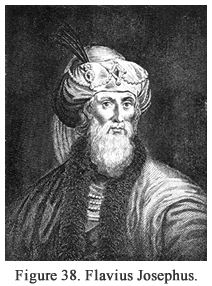
In 37 AD he was born Joseph ben Matthias, son of a Levite priest. He was well-educated and respected among the Jewish people. He bounced around, from hermit’s disciple to Pharisee to negotiator before Nero to free some priests. Then in 66 AD he objected to the Jewish rebellion against Rome. But then he joined the resistance, raised an army, fortified cities... until the next year, 67, where he retreated and then surrendered.
Though he was imprisoned, he became friends with Commander Vespasian, who two years later in 69 AD became emperor. Then Josephus served under Vespasian’s son Titus, urging his fellow Jews to surrender to Rome. They didn’t.
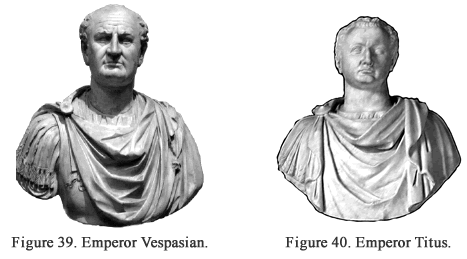
In 70 AD Jerusalem was destroyed. But Titus liked Josephus, and took him back to Rome. In 79 AD, Titus became the next emperor. Josephus became his client, got great pay, became a citizen and adopted the emperor’s family name, Flavius. He was set for life.
Now, as Flavius Josephus, he began writing history books, in a manner pleasing to the Romans. What seems most likely is that Josephus got a lot of information from other people’s books, and even remembered stories he was told, and then put them all together into a history of Biblical times and the Jewish people.
You can see how Josephus used other people’s stories in his version of the Letter of Aristeas. The Letter is found in his Antiquities of the Jews, Book 12, Chapter 2. Josephus literally took the Letter of Aristeas, and paraphrased 100 of the 322 sections. Where Aristeas says “I,” Josephus put “he.” He removed the sections where Aristeas talked to his brother, the list of translators, descriptions of Jerusalem and the philosophical questions the king asked. But this is key: he didn’t say anything that disagreed with Aristeas at all.
In fact, in 12:2:12, Josephus said you can check the book of Aristeas for more information! Everything Josephus wrote matches the Letter of Aristeas as we have it. Josephus doesn’t give us anything new, at all. The only thing he does show is that by 93 AD, the Letter of Aristeas was already written and circulating in Rome.
I’ll deal with the rest when I go over the Letter of Aristeas. So witness number seven is excused. That’s the end of the Hellenistic Greek Jewish writings. And there is still no real evidence to consider. No one has proven the existence of a BC Septuagint. Now for the so-called “Christian” witnesses.
25) It had to be written after “Caligula’s plot to introduce an idol into the Temple and the abrogation of his decree upon the timely murder of the Emperor. These events took place in the years 39-41 CE, and the Scroll must have been written after that date.» See Megillat Taanit by Professor Vered Noam (digitized 8/10/2006). The Jewish victories listed make it most likely that the scroll was created between 41 and 70 AD.
26) See The Letter of Aristeas (1917), p. 89.
27) See The Letter of Aristeas (1917), pp. 89-93.
28) See The Letter of Aristeas (1917), p. 93.
29) See The Letter of Aristeas (1917), pp. 93-95.
30) Praeparatio Evangelica (Preparation for the Gospel) by Eusebius of Caesarea, translated by E.H. Gifford (1903). Text transcribed by Roger Pearse. See Chapter 13, Section 12. Found at http://www.tertullian.org/fathers/index.htm.
31) See The Letter of Aristeas (1917), p. 96.
32) This matches up with Aristeas, section 121, though Philo here doesn’t tell how many there were.
33) This compares to Aristeas, sections 187-293.
34) Emphasis mine.